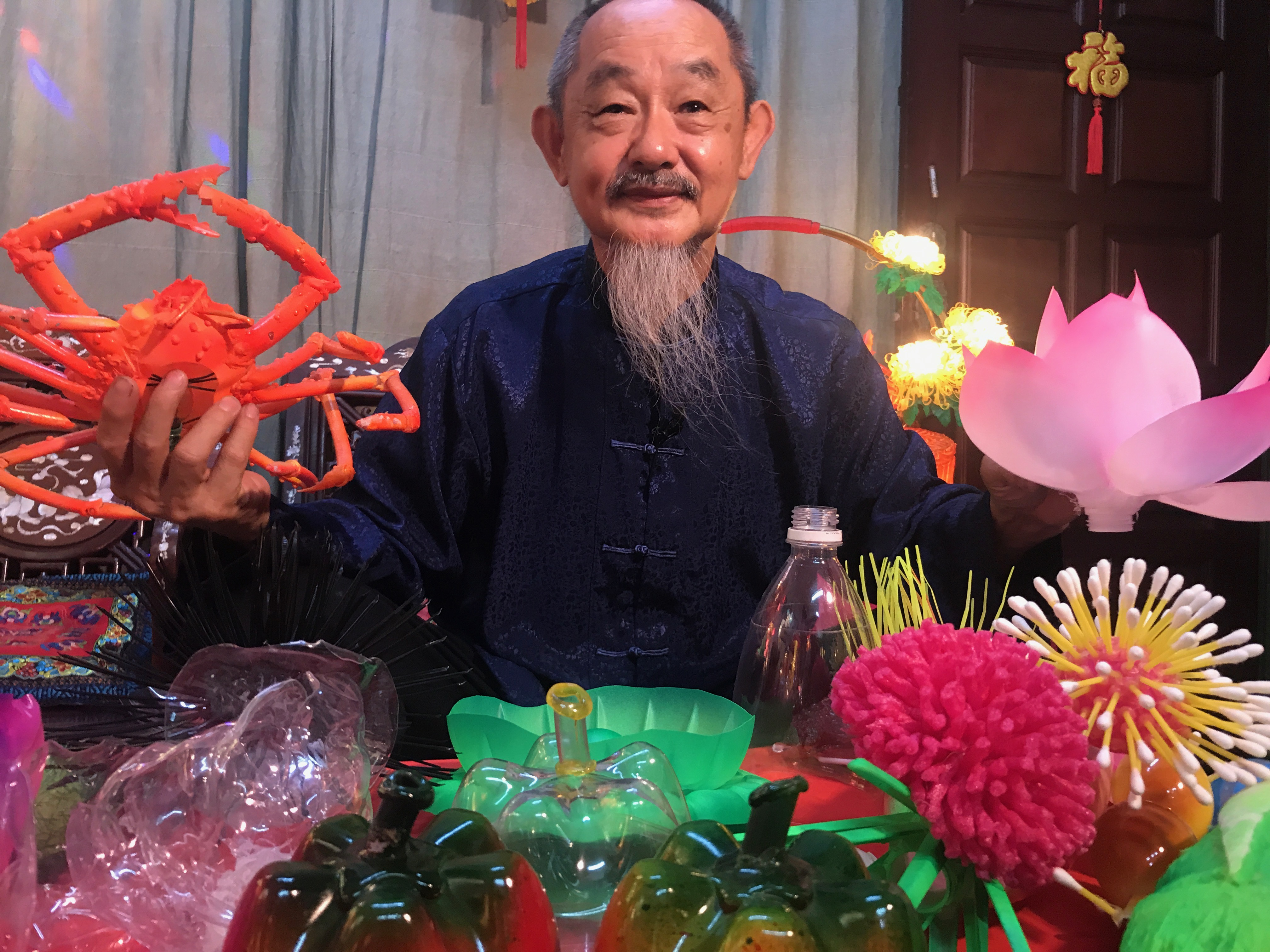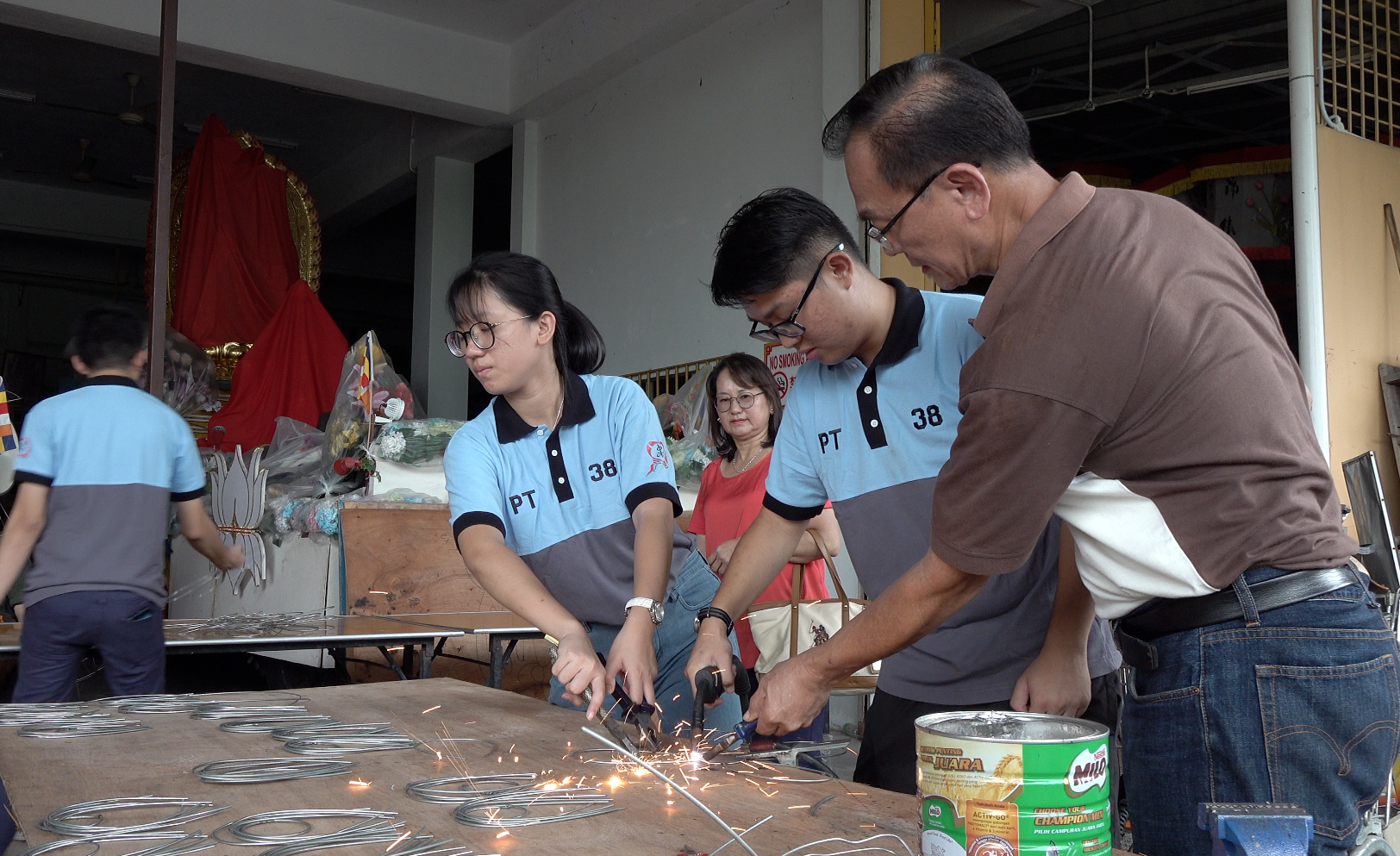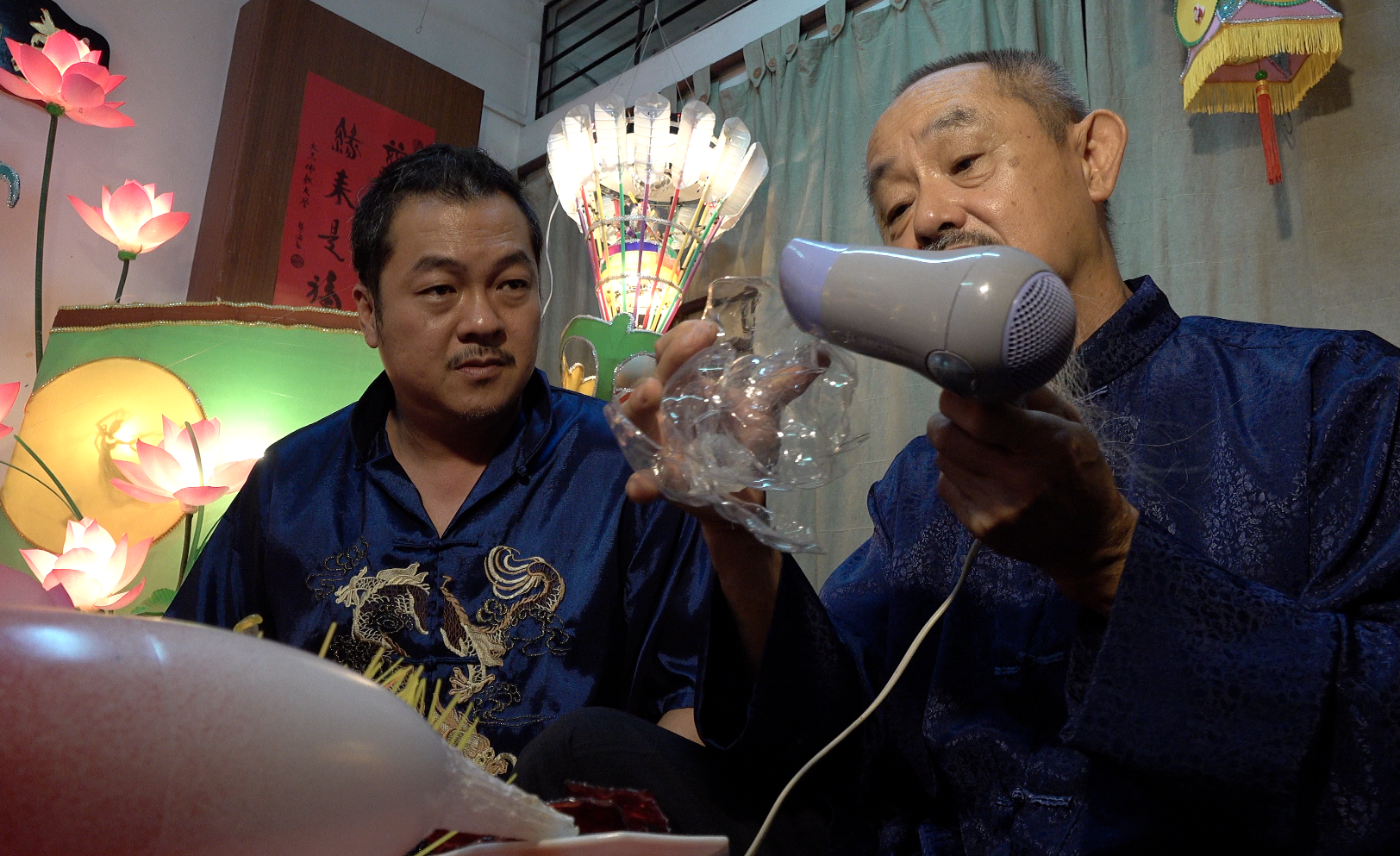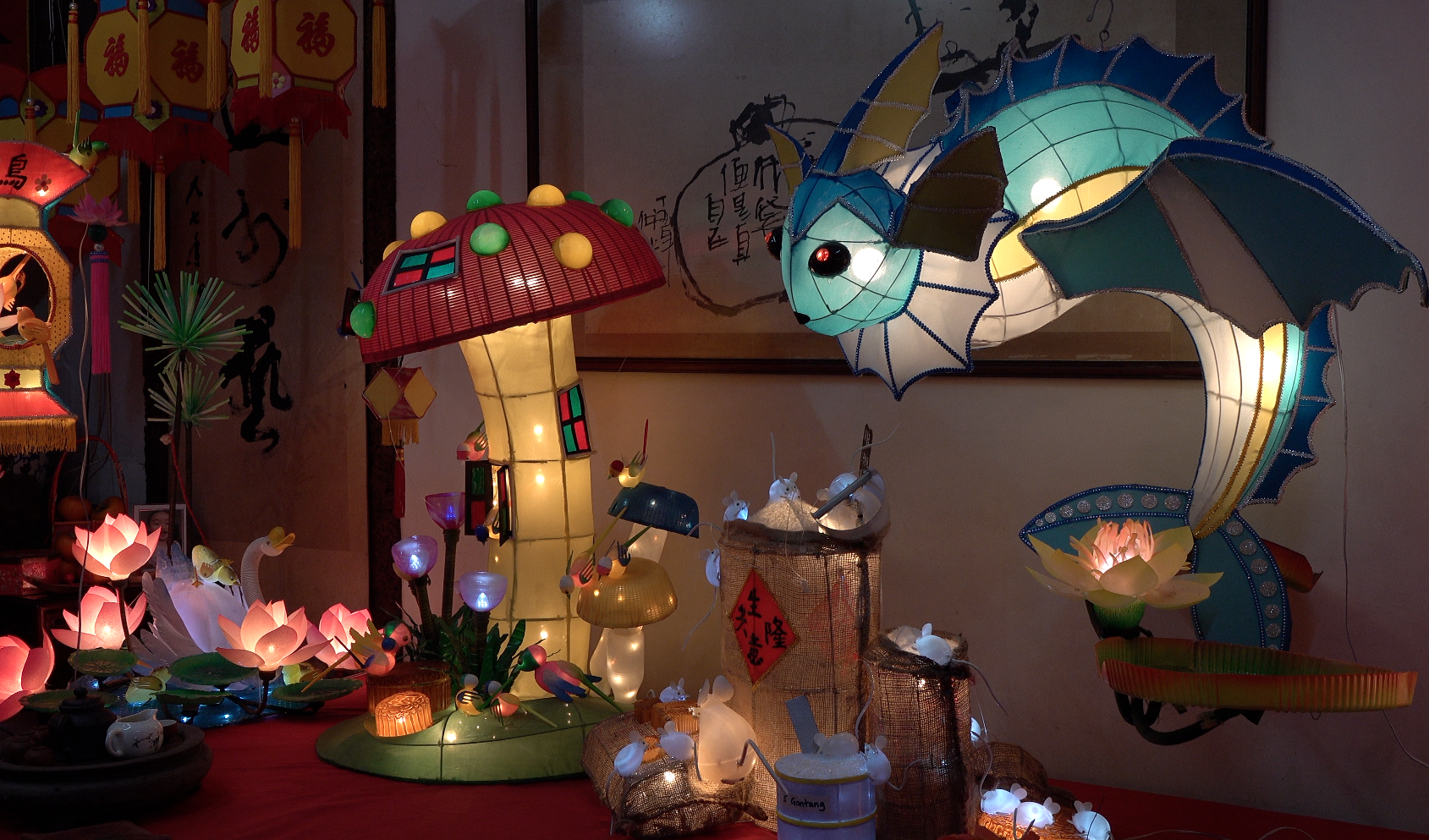

To enter Master Koh Liang Sia’s home turned workshop, you have to make your way past several classic motorbikes and a vintage car, all buried under mounds of boxes filled with odds and ends, and especially, plastic waste.
Inside his home, an array of lanterns depicting scenes such as mice nibbling at mooncakes, the bobbing head of a snake eyeing a baby bird, a pile of spiky durian and rambutan fruit, and an aquatic seascape dazzle the eyes.
Koh has been making lanterns for some 35 years, and for much of that time he’s been crafting them out what others throw away. Plastic spoons and forks become birds, plastic ties turn into sea anemones, plastic bottles are transformed into peppers and radishes, or with some skillfully applied heat from a hairdryer, are become flowers.
"My inspiration is accumulated in my daily life," says Koh. “I thought if I wanted to make lanterns and join in competitions, I needed to learn from others.
"I need to ask more. Make more lanterns. Practice makes perfect. These are the so-called 'three mores'. Observe more, ask more and practice more."

Koh turning trash into lantern art. /CGTN Photo
These days when Malaysians celebrate the Mid-Autumn Festival and take part in lantern parades, as people of all races here enjoy doing, they are likely to plump for cheap, mass-produced, imported lanterns.
But there are people here dedicated to making sure the art of lantern making doesn’t die out, and that it continues to evolve.
The Malaysia Lantern Art Association puts on workshops for schools and universities. At a Buddhist temple complex outside Kuala Lumpur, students from a local university are busy bending metal and welding the frames that will become large lanterns, under the guidance of Kee Kim Lee.

Kee (R) holds a workshop for university students. /CGTN Photo
"We want to promote and introduce this lantern making and then our culture, how to let more people enjoy our lantern culture, to introduce to the other races too."
And Kee and the association are finding young Malaysians a receptive audience.
"They show very strong interest in this making lanterns so we actually are very happy about this," Kee said.

Koh turns a plastic bottle into a flower. /CGTN Photo
Back at Koh’s house cum workshop, Koh is giving tips to Edwin Tan Geok Leng, a florist by trade, who has been making lanterns for the past four years.
"In the first two years, many competitions I have lost a lot. It’s ok because we are just getting experience.” But these days Tan is gaining a name for himself with his own intricate and imaginative lantern creations.
Like his mentor, Tan also looks to use recycled materials as much as possible.
"The past two years I have won a lot of competitions so I would like to thank my master, Master Koh."

Koh's living room cum workshop. /CGTN Photo
Koh is all too happy to pass on the knowledge he has acquired over the decades.
"If we aren't committed to it and don’t make efforts to pass it down, the lantern-making culture will gradually vanish," he said.
At the Buddhist temple, the university students creating lanterns for a Mid-Autumn Festival show share that sentiment.
"The lantern is a very traditional Chinese culture to us," said Hew Yee Gin. "For the youngsters like myself, if we get a chance to learn how to make them, it’s a great opportunity."
Meanwhile, Koh continues to find an endless supply of recyclable raw materials for his creation, and no end to his desire to keep coming up with imaginative new designs.

Copyright © 2018 CGTN. Beijing ICP prepared NO.16065310-3
Copyright © 2018 CGTN. Beijing ICP prepared NO.16065310-3